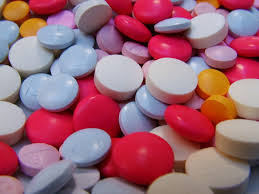Symptom Finder - Testicular Pain
TESTICULAR PAIN
It is helpful but unnecessary to do an anatomic breakdown in developing this differential diagnosis. The mnemonic MINT brings the most important causes to mind instantly.
M—Malformation suggests hernias, varicocele, and torsion of the testicle.
I—Inflammation recalls epididymitis and epididymo-orchitis.
N—Neoplasms of the testicles may be virtually painless, but the mass will give them away. Tuberculosis is also unlikely to cause significant pain.
T—Traumatic lesions are common in contact sports, but occasionally a boy will deny a history of trauma.
Referred pain from renal calculi is a significant cause of testicular pain. Any condition that irritates the T12 nerve root (e.g., osteoarthritis and herniated disc) and the course of the peripheral portion of this nerve (appendicitis) may cause testicular pain, but these are uncommon causes.
Approach to the Diagnosis
The approach to the diagnosis of testicular pain involves searching for a mass; if it is present, certain questions must be answered. Does it transilluminate (hydrocele)? Can one get above the swelling (testicular mass)? Is it reducible (hernia)? Does supporting the testicle relieve the pain (orchitis)? Ultrasonography is done to distinguish torsion from orchitis.
A search for prostatic hypertrophy or prostatitis should be made, particularly in older men. Smears of urethral discharge, urinalysis and urine culture, cystoscopy, and an intravenous pyelogram (IVP) may be indicated in selected cases. An exploration for torsion or hernia may be the only way to establish these diagnoses. If torsion is excluded a therapeutic trial of antibiotics may be warranted.
It is helpful but unnecessary to do an anatomic breakdown in developing this differential diagnosis. The mnemonic MINT brings the most important causes to mind instantly.
M—Malformation suggests hernias, varicocele, and torsion of the testicle.
I—Inflammation recalls epididymitis and epididymo-orchitis.
N—Neoplasms of the testicles may be virtually painless, but the mass will give them away. Tuberculosis is also unlikely to cause significant pain.
T—Traumatic lesions are common in contact sports, but occasionally a boy will deny a history of trauma.
Referred pain from renal calculi is a significant cause of testicular pain. Any condition that irritates the T12 nerve root (e.g., osteoarthritis and herniated disc) and the course of the peripheral portion of this nerve (appendicitis) may cause testicular pain, but these are uncommon causes.
Approach to the Diagnosis
The approach to the diagnosis of testicular pain involves searching for a mass; if it is present, certain questions must be answered. Does it transilluminate (hydrocele)? Can one get above the swelling (testicular mass)? Is it reducible (hernia)? Does supporting the testicle relieve the pain (orchitis)? Ultrasonography is done to distinguish torsion from orchitis.
A search for prostatic hypertrophy or prostatitis should be made, particularly in older men. Smears of urethral discharge, urinalysis and urine culture, cystoscopy, and an intravenous pyelogram (IVP) may be indicated in selected cases. An exploration for torsion or hernia may be the only way to establish these diagnoses. If torsion is excluded a therapeutic trial of antibiotics may be warranted.

